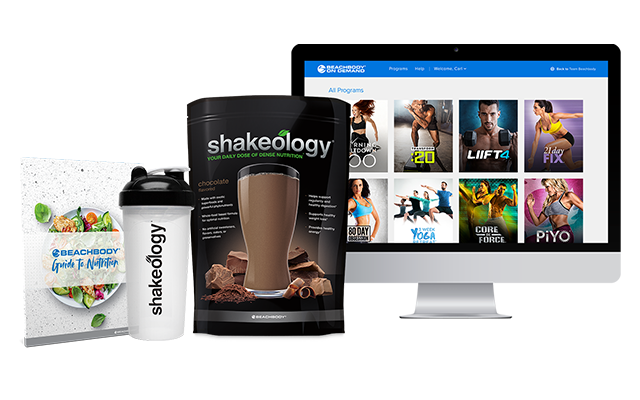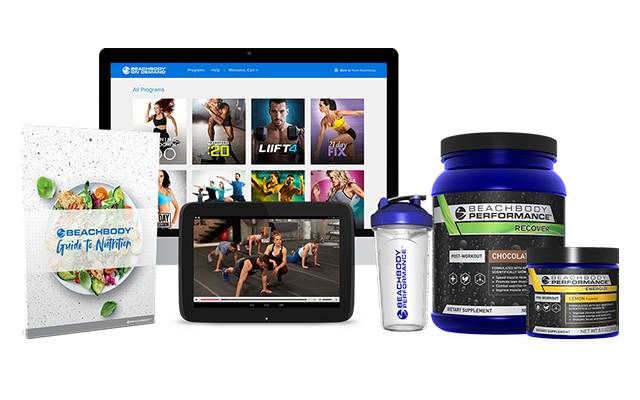Glossary of Running Terms
100m
Shortest sprint race outdoors
10K
10,000 meters; 10 kilometers; 6.2 miles
1500m
3 3/4 laps of track; called the "metric mile"; 1 mile = 1609 meters
15K
15,000 meters; 15 kilometers; 9.3 miles
2 miles
Approximately 8 laps of track; 3218m
200m
Half a lap of track
3000m
1.864 miles
40-30-30
Dietary regimen where a runner gets 40% of calories from carbohydrates, 30% from fats and 30% from protein
400m
1 lap around track, also called a "quarter"
5K
5,000 meters; 5 Kilometers; 3.1 miles
800m
Approximately a half-mile; 2 laps around track
8K
4.97 miles
Aerobic
With oxygen; usually used to describe exercise of low to moderate intensity
Aerobic Capacity
Also called VO2max; maximum amount of oxygen that can be utilized by the body; also describes a type of training that increases the amount of oxygen that can be utilized, i.e., Aerobic Capacity Intervals
Aerobic Conditioning
Training that improves endurance
Amenorrhea
The absence of menstrual periods
Anaerobic
Without oxygen; usually used to describe exercise of high to very high intensity
Athletes Helping Athletes (AHA)
The world-class marathon training and fundraising program that benefits challenged athletes.
Anaerobic Capacity
Maximum amount of energy that can be produced without requiring oxygen; also describes a type of training that increases the amount of energy that can be produced, i.e., Anaerobic Capacity Intervals
Anaerobic Threshold
see "Lactate Threshold"
Bandit
A runner who participates in a race without registering or paying the entry fee
Roger Bannister
The first person to break 4 minutes for the mile
Roy Benson, MPE
Running coach and director of running camps
Bioelectrical Impedance/Infrared
Method of determining percent body fat where an electrical impulse or infrared light are put through the body; easy to use but approximately 3-6% error possible
Biomechanics
Study of the function of the body in relation to movement; especially important for repetitive movement sports like running; poor biomechanics can lead to injury
Body Composition
Usually relating to the percent of the body comprised of lean tissue (bone, muscle, water, etc.) or fat tissue; 17% or less body fat is recommended for men; 24% or less body fat is recommended for women
Bonk
Another term like "hitting the wall"; a state of exhaustion when glycogen stores are depleted, blood glucose (sugar) levels are low and the only exercise that can be performed is slow running; typically occurs at around the 20 mile point in the marathon
Carbo-loading
The dietary practice of eating a high carbohydrate diet (approximately 60-70% of total calories) for the three days leading up to a race to maximally fill the glycogen stores
Carbohydrate
Essential nutrient of body found in pastas, breads, fruits, vegetables; should comprise the majority of calories in a runner's diet; stored in the body as glycogen in the muscles and liver; overconsumption is converted to fat
Chromium Picolinate
Supplement to help aid in the burning of fat; little scientific evidence to support its claims
Cool-down
Slow, easy running done after a workout to help you recover more quickly
CoolMax®
A high-performance polyester fiber used in athletic apparel for its cotton-like feel, moisture wicking properties and quick dry time; brand name of DuPont®
Creatine Monohydrate
Supplement designed to maximally fill the creatine phosphate stores (fuel for explosive movements like sprinting); little scientific evidence of its beneficial effects for distance runners
Cross-Training
Activities such as swimming and cycling that are used to increase conditioning and injury prevention for running or as a means of adding variety to workout schedule
Cruise Intervals
Type of workout to improve the lactate threshold; usually repetitions of 800 meters to 2-miles performed at the lactate threshold speed with short recoveries
Cushioning
The ability of a shoe to minimize the shock of running; while all running shoes have cushioning, highly cushioned shoes are usually designed for under-pronators (or supinators) who need additional shock absorption and maximum flexibility
Daniels, Jack PhD
Running coach and exercise physiologist
Decker-Slaney, Mary
Great American middle distance runner; has held many world and American records
Dehydration
Not having enough fluids in the body
DNF
Stands for "did not finish" and describes a runner who drops out of a race
DOMS
See "Muscle Soreness"
Easy Run
A slow run done at a conversational pace
Electrolytes
Minerals such as sodium, chloride and potassium that are used for normal bodily functions. These minerals are lost when the body sweats and are replaced through food and fluids.
Endorphins
Chemicals in the brain which create a feeling of euphoria; said to be the cause of the "runner's high"
Endurance
Your ability to run for long periods of time
Fartlek
Swedish word for speedplay; workout includes faster running mixed with slower running; adds variety to training and can be performed in any setting
Fast Twitch
Type of muscle fiber (cells which compose the muscles) which contract rapidly and powerfully but fatigue quickly
Fat Essential nutrient of body found in oils and meats; should comprise approximately 30% of calories in a runner's diet; overconsumption leads to increases in body fat; can be of three types: saturated, poly-unsaturated, and mono-unsaturated
Fat-burning
Used to describe an exercise intensity which burns the most fat; science is still debating the appropriate intensity for maximal fat-burning; note: burning fat at the highest rate does not necessarily correspond to burning calories at the highest rate
Fred's Team
Fundraising program to raise money for the Brain Cancer Research through marathon training and racing
Galloway, Jeff
1972 Olympic Marathoner; running coach, lecturer and director of running camps
Glucose
Basic sugar; form of sugar into which all carbohydrates are first converted and appear in the blood
Glycogen
The form in which carbohydrates are stored in the body; there are two main stores of glycogen - the liver and the muscles; when glycogen stores are depleted athletes fatigue, "hit the wall", "bonk"; stores can be maximally filled by eating a high carbohydrate diet leading up to an event
Half-marathon
13.1 miles; 21.1K
Half-mile
804.5 meters; approximately 2 laps around track
Hamstring Strain
Micro-tears of the large muscles of the back of the thigh; can be treated by ice and stretching and strengthening exercises
Hash House Harriers
A social club of runners that has been described as "a drinking club with a running problem"; members, called "hashers", are given colorful nicknames and club runs are modeled after the old English game of Hares and Hounds; the runs begin when one or two runners, called "hares", set a trail that the other runners, known as "hounds", try to follow
Heart Rate
Contraction of the heart usually measured as beats per minute
Heart Rate Monitor
A device that measures the electrical activity of the heart (heart rate); usually consists of a chest strap and watch-like wrist receiver
Hills
Workouts where a runner runs up a hill fast and jogs down then runs up again; helps develop leg power and aerobic capacity
IAAF
International Amateur Athletic Federation; world-wide organization that governs running
Insole
The removable inner part of a running shoe that sits on top of the midsole and provides cushioning and arch support
Intensity
Degree of effort or exertion
Intervals
Type of workout where a set distance is run repeatedly with a recovery jog between; for example 6 times 400 meters with 100 meters recovery jog
IOC
International Olympic Committee; world-wide organization which governs the Olympic Games
Joints in Motion
Fundraising program to raise money for the Arthritis Foundation through marathon training and racing
Junk Miles
Runs used to reach a weekly or monthly mileage total rather than for a specific benefit
Kennedy, Bob
Currently one of the top US distance runners; American record holder at 3000m and 5K; 2-time Olympian
Kick
A finishing sprint at the end of a race
L-Carnitine
Supplement to help add in the burning of fat; little scientific evidence to support its claims
Lactate Threshold
The running intensity where lactic acid begins to rapidly accumulate in the blood. Also called anaerobic threshold; lactate threshold speed is your 10K race pace plus 5-20 seconds or a heart rate zone between 85-89% of maximum.
Lactic Acid
A by-product of the body's use of carbohydrates; usually associated with muscle stiffness and burn after a hard workout
Last
Can refer to two different features of a shoe; the first is the construction of the shoe or the way the shoe's upper is attached to the midsole. There are three major types of construction: board lasting, where the upper is glued to a flexible, shoe-length "board"; slip lasting, where the upper is stitched directly to the midsole; and combination lasting, where the forefoot is attached directly to the midsole and the heel is attached to a board. Last can also refer to the shape of the shoe: straight, semi-curved or curved. A curved last turns inward from the heel to toe, a straight last has little or no curve and a semi-curved last is somewhere in between.
Lateral
Referring to the outer side (or little toe side) of a shoe
Leukemia & Lymphoma Society Team in Training
Runners who raise money for the Leukemia & Lymphoma Society and in return receive training and travel to a marathon
Log
A record of your training and running that helps you stay motivated, monitor your progress and spot trends in your running
Long Runs
Longest run of the week; usually on the weekend
LSD
Long, slow distance; slow running designed to improve endurance
Marathon
26.2 miles; 42.2K
Martin, David PhD
Running coach and exercise physiologist
Master
A runner 40 years of age or older
Maximum Heart Rate (HRmax)
The highest number of contractions your heart can make in one minute
Medial
The inner side (or arch side) of a shoe
Medial Post
Denser midsole material (often gray) added to the medial (or arch side) of the midsole to provide stability and control excessive pronation
Metric Mile
1500m, the international racing distance closest to the imperial mile; see "1500m"
Microfiber
A tightly woven fabric that's extremely lightweight and soft; notable for its wind and water resistance, ability to wick moisture and quick dry time
Midsole
The part of the running shoe between the upper and outsole that provides cushioning and support. Most midsoles are made of either EVA (ethylene vinyl acetate) or polyurethane foam. EVA is lighter and more flexible than polyurethane, but it is not as durable. It can come in various densities with gray-colored EVA being denser than white. The denser, gray EVA is usually placed along the medial side of the shoe to provide stability and motion control and is often referred to as a "medial post." Some midsoles have additional cushioning technology such as air, gel, grids, etc.
Mile
1609 meters; approximately 4 laps around track
Minerals
Essential nutrient of body; must be ingested in the correct amounts in the body; aid in the processes which use the other nutrients and compose some of the structures of the body; may be obtained through diet or supplementation; overconsumption can be toxic
Motion Control
The ability of a shoe to limit overpronation and provide stability
Muscle Soreness
Pain, stiffness, and soreness in a muscle due to microscopic tears of the muscle usually due to doing more work than the muscle is used to (also called DOMS or delayed onset muscle soreness)
Negative Splits
Running the second half of a race faster than the first half
Olympics
Competition held once every 4 years; highest goal for most runners
Orthotics
Inserts placed inside shoes to correct biomechanical problems
Outsole
The bottom-most layer of most running shoes; the layer that contacts the ground and provides traction
Overpronation
The excessive inward roll of the foot; overpronation can be controlled through the use of motion control shoes and/or orthotics
Overtraining
Condition when runner trains too much too soon and leads to fatigue, injury and/or burn-out
Oxygen Debt
A state where the energy demand is greater than what can be provided by oxygen thus inducing heavy breathing to consume more oxygen
Pace
Measure of the speed of running; usually quantified as minutes taken to run a mile; for example a runner may run a 7:00 per mile pace for a marathon
Piriformis Syndrome
Pain in the buttocks resulting from a tight piriformis muscle pressing against the sciatic nerve; can be treated by stretching exercises for the buttocks
Plantar Fasciitis
Foot injury where there are micro-tears of the arch; especially painful in the morning; can be treated by stretching the arch and calves; massage with hands or rubbing foot on golf ball or shaving cream can; if untreated can lead to heel spurs (spur of bone from the heel bone)
Peak
Scheduling your training so that your best performance is timed for a goal race or event
PR
Personal Record or Personal Best; fastest time a runner has run for a given distance
Prefontaine, Steve
One the best American distance runners in history; known for his ferocious competitiveness; killed in car crash at the age of 24 in 1975; two movies have been made of his short career
Pronation
The natural, inward roll of the foot; pronation begins when heel contacts the ground, the foot then rolls inward to absorb shock and transfer weight to the ball of the foot as it prepares to push off. It is a natural and necessary motion for running and walking.
Protein
Essential nutrient of body found in meats, eggs, dairy products, beans and nuts; should comprise approximately 15-25% of calories in a runner's diet; converted into the body's structures-bones, muscles, organs, etc.; overconsumption is converted to fat
Pyruvate
Supplement to help add in the burning of fat; little scientific evidence to support its claims
Quarters
Jargon for a quarter mile or 400 meters; often used when describing workouts where runners run 400-meter (or quarter) repeats
Recovery Runs
Slow to moderate running to recover from hard workouts or races and/or maintain aerobic conditioning
Repeats
See "Intervals"
Resting Heart Rate
The number of times your heart beats per minute when you are relaxed and still; usually measured first thing in the morning before getting out of bed
RICE
An acronym for rest, ice, compression and elevation; a procedure for treating certain injuries
Ride
A term used to describe a shoe's ability to smoothly transfer a runner's weight from heel-strike to toe-off
Road Races
Running contests over streets; all runners can participate
Rodgers, Bill
"Boston Billy"; has won the prestigious Boston and New York City marathons each 4 times
RRCA
Road Runners Clubs of America; organization to which most running clubs in the US belong; provide information and resources for running clubs
Runner's High
Feeling of euphoria some runners feel after a long, hard run or race (see Endorphins)
Runner's Knee
Knee pain usually caused by the knee cap not sliding properly during movement; may be related to muscular imbalances within the thigh muscles; can be treated with strengthening exercises for weak muscles (usually the inner thigh muscle)
Running Economy
The amount of oxygen consumed at a given running speed; a runner who consumes less oxygen at this running speed as compared to another running is said to be more "economical"
Samuelson, Joan
1984 Olympic Gold Medalist in the marathon; American marathon record holder
Sciatica
Pain running from the low back to the toes related to pressure on the large nerve innervating this areathe sciatic nerve; should be evaluated by physician
Second Wind
Feeling of more energy and less effort some runners feel after 15-20 minutes of running
Shin Splints
Lower leg injury where there is pain along the shin bone; usually caused by excessive pronation or weak shin muscles; treat with ice and stretching and strengthening exercises; can lead to stress fractures
Shorter, Frank
1972 Olympic Gold Medalist in the marathon; his victory spurred the running boom of the 1970's
Singlet
A light weight tank top worn by runners
Skinfold Calipers
Process of determining body composition where several folds of skin are measured for thickness and then used to calculate percent body composition
Slow Twitch
Type of muscle fiber (cells which compose the muscles) which contract slowly but can perform for a long time
Speed Work
Short, fast intervals with recovery jogs between; increases your leg turnover and maximizes your stamina and race confidence
Split Times
Denotes the time it takes to run a portion of a total run (often measured at mile markers or other distinctive points along the way); for example, a runner may run a 7:00 mile split between miles 4 and 5 of a 10K (6.2-mile run)
Stability
The ability of a shoe to resist excessive motion; usually used to describe shoes designed for neutral runners or mild over-pronators
Stamina
Your ability to combine speed and endurance
Strength Training
Movements against resistance to develop muscular strength; usually weight training/lifting weights
Stretching
Movements designed to increase a muscle's flexibility; best method is still being debated but it appears that consistently stretching is the key to increasing flexibility
Strides
Short, fast but controlled runs lasting 15-45 seconds followed by full recovery; benefits include faster leg turnover and improvements in running form
Supination
See "Underpronation"
Supplex®
A high-performance nylon fabric common in performance athletic wear and notable for its sturdy, cotton-like feel, moisture wicking abilities and quick dry time; brand name of DuPont®
Taper
Reducing your mileage several days to three weeks before an important race to ensure peak performance on race day
Tempo Runs
Type of workout to improve the lactate threshold; usually consists of 15-30 minutes of running at the lactate threshold speed
Toebox
The front portion of a shoe. Also known as the forefoot
Track
Measured oval where races of varying distances are contested; usually measure 400 meters around; 4 laps equals approximately 1 mile
Ultra-marathon
Races longer than a marathon (26.2 miles)
Underpronation or supination
The lack of sufficient inward motion of the foot; highly cushioned, flexible shoes are recommended to absorb shock and allow the foot to pronate naturally
Underwater weighing
Process of determining body composition where a person's weight, while submerged in water, is used to calculate percent body composition; considered the best method for calculating percent body fat
Upper
The top portion of the shoe, usually made of leather, synthetic leather or mesh material
USA Track & Field
National governing body for running in the US
U.S.O.C.
United States Olympic Committee; US organization that governs the Olympic Games
Vitamins
Essential nutrient of body; must be ingested in the correct amounts in the body; aid in the processes which use the other nutrients; may be obtained through diet or supplementation; overconsumption can be toxic
VO2max
Also called maximal aerobic capacity; maximum amount of oxygen that can be utilized by the body; higher V02max generally equals better performance; can be improved with training but has a genetic limit
The Wall or Hitting the Wall
A state of exhaustion when your body runs out of glycogen or energy; usually around the 20 mile point in a marathon (also "Bonk")
Warm-up
Slow, easy running before a workout or race that raises your heart rate and prepares you for more intense activity
Water
Essential nutrient of body; runners should drink enough throughout the day to maintain clear urine and enough after a run to return to their pre-run body weights
Wicking
The ability of a fiber to move moisture from your skin to the surface of the fabric so that it can evaporate and keep you more comfortable
Williams, Todd
Currently one of the top US distance runners; American record holder at 15K; 2-time Olympian
World Championships
Running and track and field championships held once every 2 years; almost as prestigious as the Olympics







